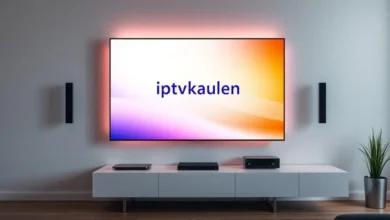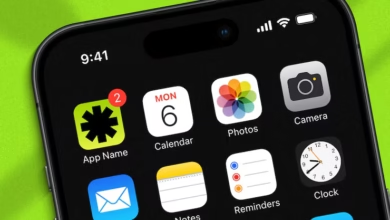A Comprehensive Guide to Pop-Under Ads: What You Need to Know

In the rapidly evolving world of online advertising, pop-under ads have gained significant attention, yet they remain one of the most controversial ad formats. While some find them intrusive, others see them as an effective way to generate revenue without disrupting the user experience. This article will explore what pop-under ads are, how they work, their benefits, and best practices for using them to ensure that advertisers and website owners can get the most out of this ad format.
What Are Pop-Under Ads?
Pop-under ads are a type of online advertisement that open in a new browser window or tab behind the main window when a user clicks a link or navigates a webpage. Unlike pop-up ads, which appear in the forefront of the screen, pop-under ads remain hidden behind the active window until the user either minimizes or closes the current window. This ensures that the user’s browsing experience is not immediately interrupted, making them less intrusive than other ad formats.
Although pop-under ads are not initially visible, they still manage to capture attention once the user closes the current window. This delay in visibility can make pop-under ads an appealing format for advertisers aiming to attract users’ attention without being too disruptive.
How Do Pop-Under Ads Work?
Pop-under ads work through scripts embedded in a webpage’s code. When a user visits a site, the ad is triggered in the background. Unlike pop-up ads that immediately block content, pop-under ads stay behind the main window and only appear once the user closes or minimizes the active window.
This design means that pop under ads do not hinder the user’s flow of navigation on the website. They function similarly to how a new browser window opens in the background when you access a website, offering a non-invasive method of advertising. However, the fact that they stay hidden for a while can often make them more effective in terms of engagement, as users may click on them after finishing their current task.
Benefits of Pop-Under Ads
1. Minimal Disruption to User Experience
One of the most significant advantages of pop-under ads is that they do not disrupt the user experience as much as other types of ads. Since they open behind the browser window, they do not block or interrupt the content the user is viewing. Users can finish reading articles or watching videos without any sudden pop-ups, making this a user-friendly advertising method.
2. Higher Engagement Rates
Because pop-under ads are revealed once the user closes the active window, they often result in higher engagement rates. Users tend to interact with pop-under ads more, since they only see the ad when they are done with their current task. This makes them a more appealing choice for advertisers looking for a better return on investment (ROI).
3. Increased Conversion Rates
When a user closes or minimizes a browser window, the pop-under ad appears in full view, which increases the likelihood that the user will click on the ad. The element of surprise, combined with the user’s completed task, often results in more effective ad interactions, making pop-under ads a compelling choice for boosting conversions.
4. Revenue Generation
Pop-under ads are highly effective at generating revenue for website owners. Since they are less intrusive, they do not drive users away as easily as pop-up ads, leading to better overall retention. Advertisers are also willing to pay higher rates for ads that perform well without harming user experience, meaning publishers can significantly benefit from using pop-under ads.
Pop-Under Ads vs. Other Ad Formats
When evaluating pop-under ads, it’s helpful to compare them to other popular ad formats. Let’s take a look at how pop-under ads compare to pop-up ads, banner ads, native ads, and video ads.
1. Pop-Up Ads
Pop-up ads appear over the content the user is currently viewing, which can be disruptive and frustrating. Most internet users find pop-up ads annoying, often using ad-blockers to avoid them. In contrast, pop-under ads open in the background, which means they are less likely to irritate the user and more likely to be interacted with after the user closes the main window. Thus, pop-under ads offer a much more pleasant user experience.
2. Banner Ads
Banner ads are one of the oldest forms of online advertising. They are typically placed at the top, bottom, or sides of a website and can be static or animated. However, banner ads suffer from a phenomenon called “banner blindness,” where users consciously ignore the ads, especially when they are in familiar locations. Pop-under ads, on the other hand, do not fall prey to this issue since they are not always visible and appear at a later time, often capturing more user attention.
3. Native Ads
Native ads are designed to blend in with the content of a website, making them less intrusive. They are highly effective in content-driven websites, where users are more likely to engage with ads that match the look and feel of the site. However, native ads can be more expensive to implement compared to pop-under ads, and their effectiveness is largely dependent on the context in which they are displayed. Pop-under ads, though less seamless in design, offer a different advantage of appearing at a later time, potentially making them more noticeable when the user is ready to engage.
4. Video Ads
Video ads can be very engaging but are also known to interrupt the user’s experience, especially when they autoplay. Since video ads often cannot be skipped immediately, they can create frustration among users. Pop-under ads, however, do not disrupt the user’s browsing flow and allow the user to continue interacting with the content without any interference. This makes pop-under ads a more user-friendly option compared to video ads.
Best Practices for Using Pop-Under Ads
If you are considering using pop-under ads, there are several best practices you should follow to maximize their effectiveness:
1. Target the Right Audience
The success of pop-under ads depends on reaching the right audience. Make sure that the ads are relevant to the users visiting your site. Proper audience targeting will ensure that your pop-under ads resonate with users and increase the likelihood of engagement.
2. Use Relevant Content
The content within your pop-under ads should align with the interests of your audience. Ads that are relevant to the user’s preferences are more likely to be clicked on. Avoid displaying ads that are too generic or irrelevant, as these will likely be ignored.
3. Don’t Overdo It
While pop-under ads can be highly effective, using them too frequently can lead to a negative experience for users. It’s essential to strike a balance by using pop-under ads strategically. Overloading your site with these ads may discourage users from returning, so moderation is key.
4. Optimize for Mobile
With mobile browsing on the rise, it’s essential to optimize pop-under ads for mobile devices. Ensure that the ads are responsive and appear correctly on smaller screens. A mobile-friendly pop-under ad increases the chances of user interaction and improves the overall effectiveness of your ad campaign.
Conclusion
In conclusion, pop-under ads offer a non-intrusive way to advertise, providing benefits such as higher engagement rates, improved conversion rates, and the potential for greater revenue generation. Unlike pop-up ads, pop-under ads do not interrupt the user experience, making them a preferable option for website owners looking to balance monetization with user satisfaction. By following best practices like targeting the right audience, using relevant content, and optimizing for mobile, you can take full advantage of pop-under ads and ensure they contribute to your overall advertising success.




